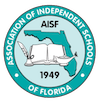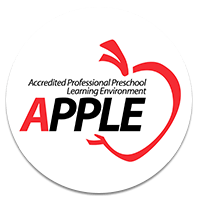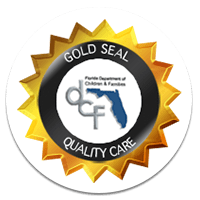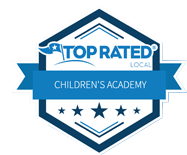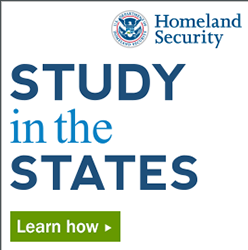Elementary School is an action-packed time, full of learning and development. Your grade school-age child will learn to read, and transition to reading to learn. They will mature emotionally and physically as they grow more independent and reach toward adolescence. Elementary School children will gain more control over their own body and impulses and will expand their understanding of the world around them.
Elementary children notice that words are all around — in books, at the supermarket, at the bus stop and in their homes. They play with language by creating silly rhymes and nonsense words. While this is usually great fun, it is also a very important step in learning to read.
Teachers read a variety of poems, stories, and non-fiction books aloud to children. Elementary children learn that letters and sounds go together to form words, and how to identify alphabet letters and their sounds. Many children are expected to read words by the end of the year.
Mathematics
Kindergarten
Children learn mathematic concepts from counting and cardinality domain consist of reading and writing numerals from 0 to 20, represent a number of objects with a written numeral 0–20 (with 0 representing a count of no objects), and understanding the relationship between numbers and quantities to understanding operations and algebraic thinking consist of using addition and subtraction within 10 to solve word problems involving both addends unknown, e.g., by using objects, drawings, and equations with symbols for the unknown numbers to represent the problem.
First Grade
First grade mathematic skills begin with the end of the year consists of kindergarten and gradually advance to children determining the unknown whole number in an addition or subtraction equation relating to three whole numbers. For example, determine the unknown number that makes the equation true in each of the equations 8 + ? = 11, 5 = [] – 3, 6 + 6 = [] .
Second Grade
As children are continuing their mathematical growth, they will learn new skills like how to generate measurement data by measuring lengths of several objects to the nearest whole unit, or by making repeated measurements of the same object. Show the measurements by making a line plot, where the horizontal scale is marked off in whole-number units.
Third Grade
Problem-solving is a crucial skill and through measurement and data, children learn how to measure and estimate liquid volumes and masses of objects using standard units of grams (g), kilograms (kg), and liters (l). Add, subtract, multiply, or divide to solve one-step word problems involving masses or volumes that are given in the same units.
Fourth Grade
Children learn algebraic reasoning that involves problem-solving using the four operations with whole numbers and fractions. Number sense and operations will be explored by learning place value for multi-digit numbers and using operations with multi-digit numbers including decimals. It is essential to develop an understanding of the relationship between different fractions and decimals. In addition, children learn how to problem solve with time, money, measurement, geometry, and probability.
Fifth Grade
The children build on prior knowledge in place value of multi-digit numbers with decimals and begin using the thousandths place. Children will demonstrate an understanding of equality, the order of operations, equivalent numerical expressions, analyze patterns and relationships between inputs and outputs, convert measurement units to solve multi-step problems, solve problems involving money, interpret a fraction as an answer to a division problem, and perform operations with fractions. As for geometric reasoning, children learn to solve problems involving the volume of right rectangular prisms and plot points and represent problems on the coordinate plane.
Science
Kindergarten
Science promotes children to learn about their environment through observation, exploration, investigation, and experimenting. The learning begins with recognizing the five senses and related body parts and continues through different concepts like exploring the Law of Gravity by investigating how objects are pulled toward the ground unless something holds them up.
First Grade
Students learn to make observations that clearly distinguish specific objects from others and how to sort items by different attributes (e.g., color, size, weight). Through exploration, students will also classify matter by temperature. Students will explore and come to conclusions about the temperature (hot or cold) of matter.
Second Grade
In second grade children are making deeper connections between living things. They learn that all plants and animals, including humans, are alike in some ways and different in others. All plants and animals, including humans, have internal parts and external structures that function to keep them alive and help them grow and reproduce. Humans can better understand the natural world through careful observation.
Third Grade
Planetary science involves the study of all objects in the solar system and objects that orbit our Sun. Children learn the differences in stars are limited to brightness, size, or appearance in relation to distance and that stars emit energy. Information related to the energy emitted by a star is limited to visible lights. Students should be able to recognize that stars are made of gases but not the chemical composition of stars.
Fourth Grade
Fourth grade will explore four different branches of science: nature of science, physical science, life science, and earth & space science. Nature of science focuses on the practice of science such as the role of theories, laws, hypotheses, and models. In Life Science, the children will explore heredity and reproduction interdependence within living organisms. Physical Science consists of properties of matter, changes in matter, forms of energy transfer and transformations, and motion of objects. In Earth and Space Science, the children will explore Earth in space and time and Earth’s structures.
Fifth Grade
Fifth grade will explore science inquiries to plan and execute experiments, observation, predictions and making conclusions. In addition to scientific experiments, they learn about other means of inquiry. They are taught the difference in observable versus inferential data. Through Earth and Space Science, the students learn about the properties of Earth, the solar system, the Milky Way galaxy and stars. They explore what moons, asteroids and comets are. Additionally, they come to understand that different environments and climate zones have different weather factors. For the physical sciences, they are introduced to atoms and learn that atoms cannot be detected by the human eye.
Social Studies
Kindergarten
Social studies enable students to understand the timeline from past to present and participate in decision-making about their world. Children learn to develop an understanding of how to use and create a timeline. They also learn to demonstrate the characteristics of being a good citizen by taking turns, sharing, taking responsibility, following rules, understanding the consequences of breaking rules, practicing honesty, self-control, and participating in classroom decision making.
First Grade
Many symbols are recognized throughout our country and world. Children learn the symbols and individuals that represent American constitutional democracy. For example, the United States flag, Pledge of Allegiance, National Anthem, Statue of Liberty, bald eagle, George Washington, Abraham Lincoln, current President. Children will also recognize that money is a method of exchanging goods and services (coins/bills versus bartering or trading).
Second Grade
In second grade, children will examine primary and secondary sources (artifacts, photographs, newspapers, audio/video recordings, documents, maps, coins, stamps, textbooks, reference books). They will also learn why United States citizens have guaranteed rights and identify rights. For example, the right to vote, freedom of speech, freedom of religion. Children are the future; they will identify ways citizens can make a positive contribution in their community by volunteering or recycling.
Third Grade
In third grade, children are distinguishing between currencies used in the United States, Canada, Mexico, and the Caribbean. They also learn how the government was established through a written Constitution. In geography, children learn to identify the five regions of the United States (Northeast, Southeast, Midwest, Southwest, West), and label the states in each of the five regions of the United States.
Fourth Grade
The children will continue to build a foundation of geography, economics, civics, and history knowledge. In addition to focusing on the history of Florida, the students will explore Prehistoric and Ancient Civilizations, U.S. Revolution, Geography Tools and Vocabulary, U.S. Civics, Economics, and Current Events. The students will compare how ancient, past, and current events are often tied together.
Fifth Grade
Social Studies encourages students to become engaged and responsible citizens who think critically and make informed decisions. Children will research using online and library resources to find information. We encourage students to make real world connections using old pictures or other information about either family or the land on which they live. The children will explore the history of where they live and compare the differences between your community, past and present. The students will learn how to use Historical Artifacts, Interview Historical Figures, and Map Out locations.
Follow & Focus
Children often wonder about complex abstract concepts that they may not be ready to fully comprehend. They may look at a globe and wonder why people don’t fall off the bottom of the Earth, because they aren’t able to really understand gravity. They may imagine that it’s possible to stand on a cloud, even though they know that it’s made up of water droplets.
Children in kindergarten and elementary are becoming more mature in both their thoughts and actions. Your child can usually follow directions from his teacher and focus on tasks. While a preschool teacher may have let children play freely at the block center, a teacher knows that she can ask children to complete a related assignment, such as recreating on paper a pattern that they’ve begun with blocks. Experiences like this help children gain basic skills. They’ll use these basic skills later in their school life when they’re asked to solve a math problem, conduct a science experiment, read a book, or write a story.


